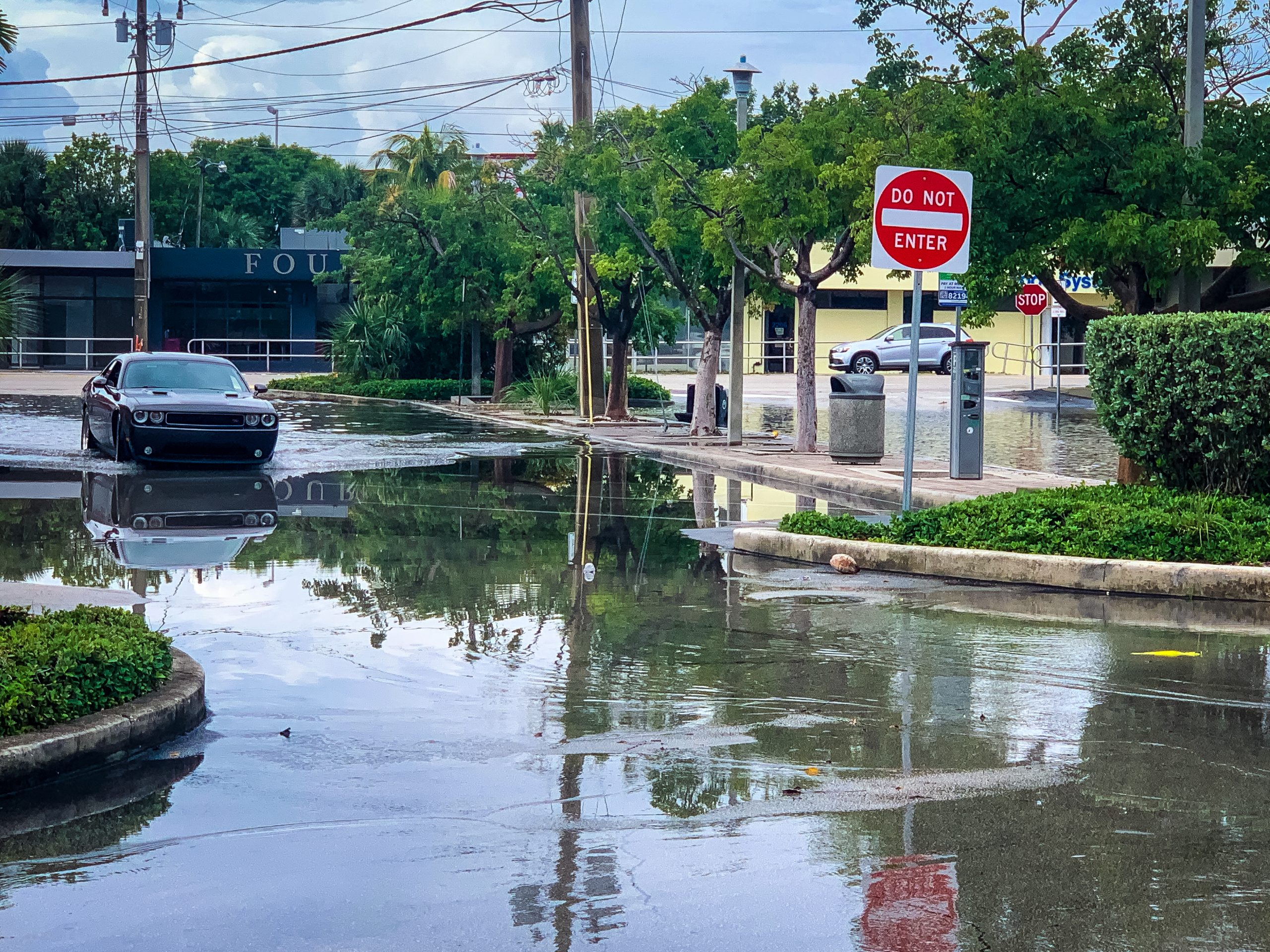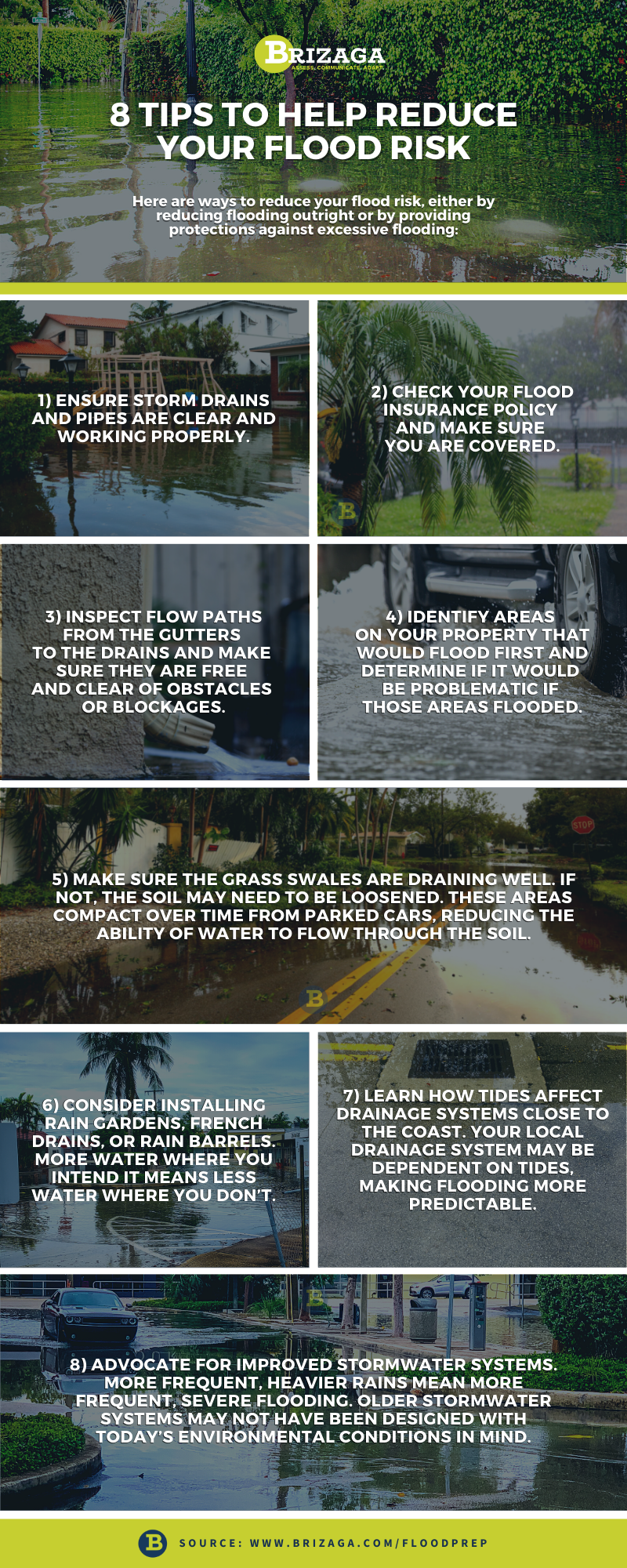How To Reduce Your Flood Risk From Rainstorms and King Tides

The South Florida region experienced an onslaught of rain this past weekend, leaving many areas flooded with impassable roadways. As environmental conditions change, we are anticipating more rainfall in shorter periods, which will overwhelm our stormwater systems. Roadways are an important element in stormwater planning, and most local roads and parking lots are expected to flood in heavy rain events, providing somewhere for the water to go and preventing property damage. Even so, it presents a major inconvenience, and is expected to continue or worsen without proper stormwater management. This places a burden on citizens across the socioeconomic spectrum.
Rainfall induced flooding warrants a different kind of stormwater management approach for homeowners than for homeowner associations. Homeowners struggling with onsite flooding can take a number of actions to reduce the impact of flooding on their property. Optimizing the outdoor space can minimize flooding on the property. Methods include integrating a rain garden on your property, which designates a specific area for flooding during heavy rains, complete with flora that flourishes in such an environment. Installing small drain pipes contained within gravel or mulch beds provide additional water storage, reducing the amount of rain that would otherwise pond. Rain barrels are another option to collect water, which can then be used for a number of purposes. A combination of these efforts could greatly mitigate onsite flooding.
For homeowner association leaders, it is critical that appropriate water management practices are in place. Homeowner associations are typically responsible for the proper maintenance of drainage basins and pipes, along with inspections of easements and restoring soil from eroded locations. With heavy downpours occurring more frequently, homeowner associations can get overwhelmed with an array of drainage issues, all the while individual homeowners are requesting individual assistance. As a result, identifying opportunities to mitigate flooding on a property level is a key element amidst a changing environment.
After all, the bucket is filled one drop at a time. Finding other places for those drops to fall helps to prevent the bucket from overflowing.
Here are 8 tips to help to reduce your flood risk, either by reducing flooding outright or by providing protections against excessive flooding:
- Ensure storm drains and pipes are clear and working properly.
- Check your flood insurance policy and make sure you are covered.
- Inspect flow paths from the gutters to the drains and make sure they are free and clear of obstacles or blockages.
- Make sure the grass swales are draining well. If not, the soil may need to be loosened. These areas compact over time from parked cars, reducing the ability of water to flow through the soil.
- Identify areas on your property that would flood first and determine if it would be problematic if those areas flooded.
- Consider installing rain gardens, French drains, or rain barrels. More water where you intend it means less water where you don’t.
- Advocate for improved stormwater systems. More frequent, heavier rains mean more frequent, severe flooding. Older stormwater systems may not have been designed with today’s environmental conditions in mind.
- Learn how tides affect drainage systems close to the coast. Your local drainage system may be dependent on tides, making flooding more predictable.
And finally, a reminder not to drive through flooded roadways. It’s easy to lose control of your vehicle, or there may be a downed wire that you can’t see.



